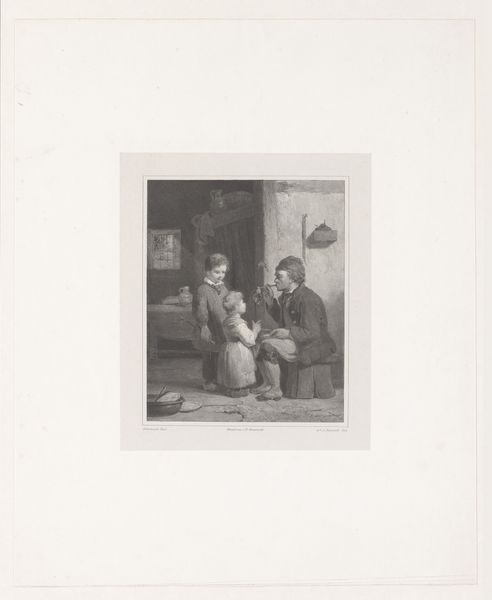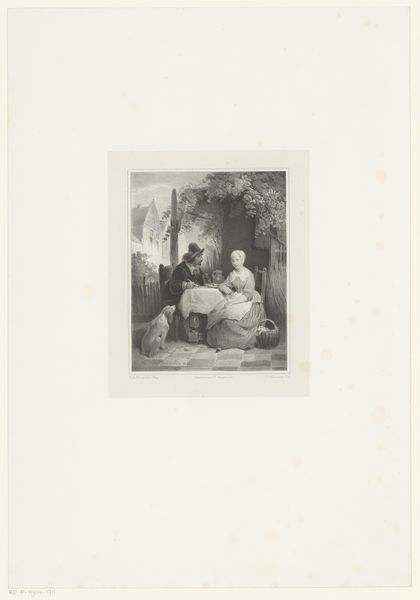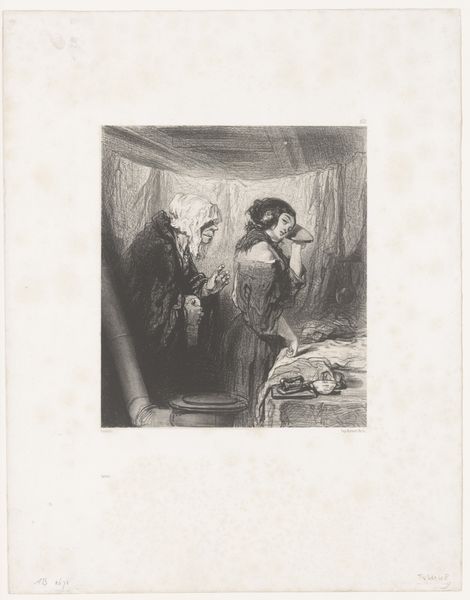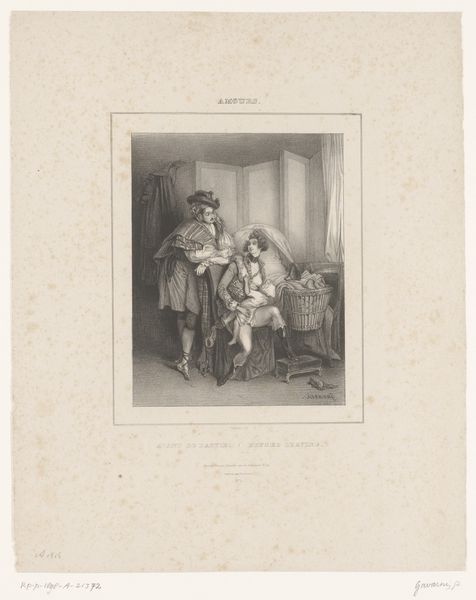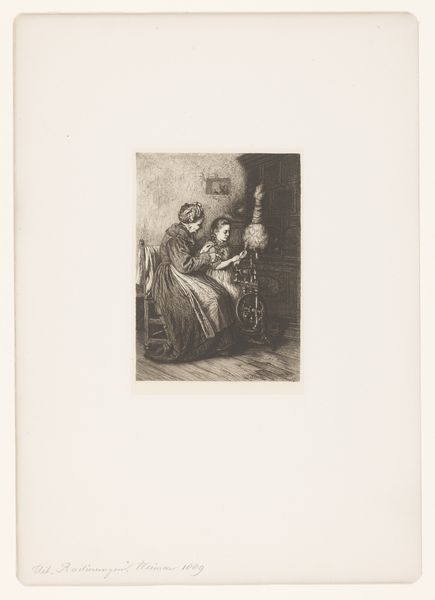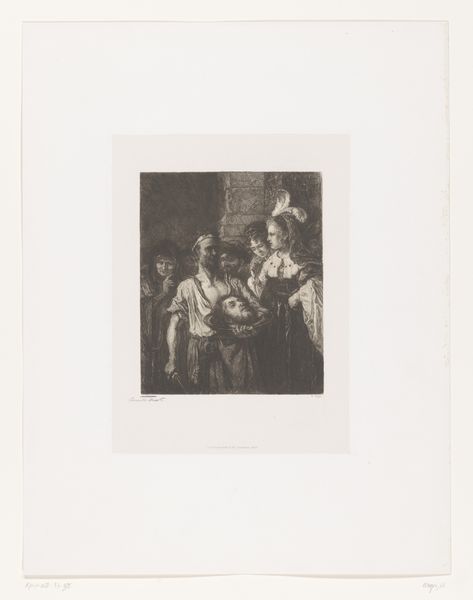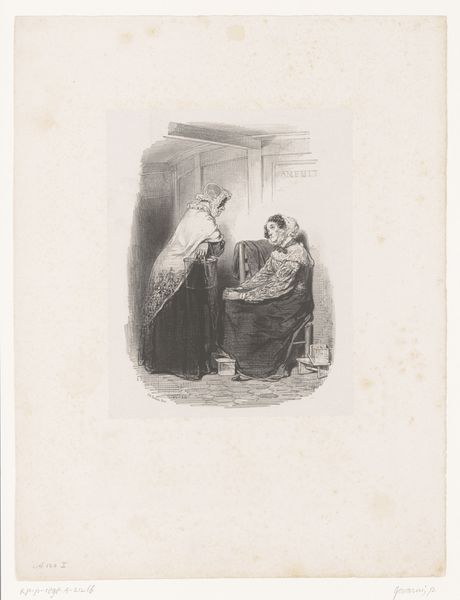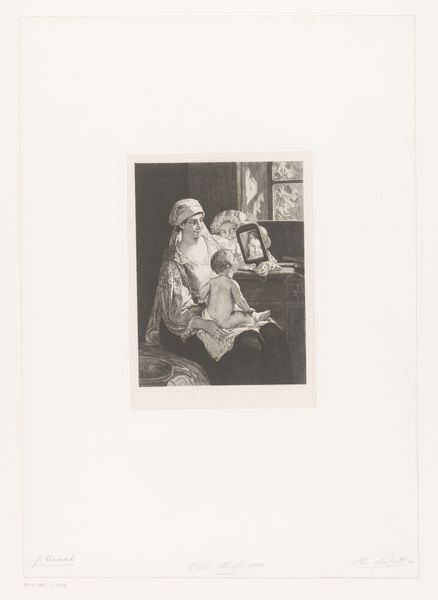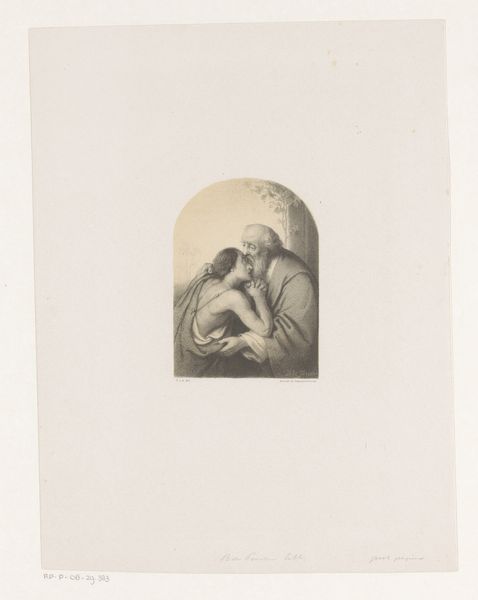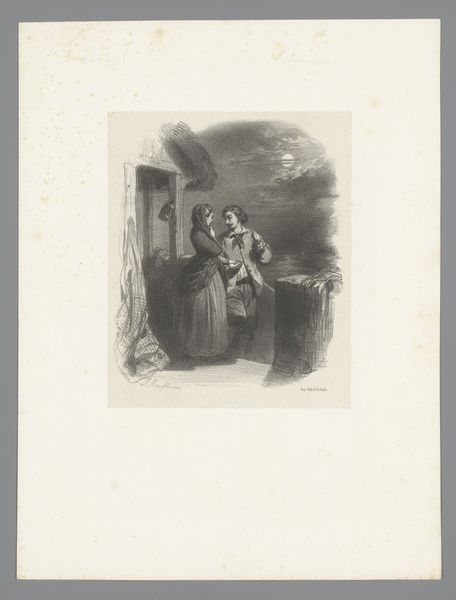
drawing, pencil
#
portrait
#
drawing
#
pencil
#
pencil work
#
genre-painting
#
academic-art
#
realism
Dimensions: height 347 mm, width 258 mm
Copyright: Rijks Museum: Open Domain
Curator: Jacob Spoel created this pencil drawing, titled "Bordurende vrouw," sometime between 1833 and 1863. It's currently housed here at the Rijksmuseum. Editor: My immediate response is one of intimacy and quiet domesticity. The limited grayscale palette and the focus on everyday activity creates a very gentle mood. Curator: It does. Genre painting like this, prevalent during that period, provides invaluable glimpses into the quotidian lives of ordinary people. We gain access to their domestic settings and customary practices through the politics of imagery embedded in this type of work. Editor: Exactly, and considering the socio-political context, this seemingly simple scene carries layers of meaning related to gender and labour. How might we interpret the act of embroidery as a reflection of a woman’s role within the family and the broader societal structures of the time? Was embroidery merely a pastime, or a form of resistance in itself, a subversion within the accepted activity? Curator: Precisely! Examining similar works reveals a complicated narrative, intertwining social expectation with female expression. The detail Spoel provides - the angle of the light, the texture of the fabric, her focussed gaze - are crucial. This reflects an increasing academic artistic emphasis on realist renderings of everyday subjects, thus influencing and shaping perception of women in society. Editor: And think about the child looking on. This adds an intergenerational component; observing, internalizing future social and gender expectations. What could that represent, in that historical context, within the realm of familial social dynamics? Curator: The location also factors into it: considering the setting, bathed in soft sunlight at what seems to be the doorway. How does that threshold relate to these figures’ place in the social hierarchy? The image can tell so much about what public and private spheres meant. Editor: Agreed, looking at it now makes one truly consider the unseen labour, expectations, and realities inherent in such imagery. Curator: Understanding art through a socio-historical lens really provides invaluable insight. Editor: It’s also incredible how that context amplifies the impact of what may, at first glance, seem a peaceful, quaint image.
Comments
No comments
Be the first to comment and join the conversation on the ultimate creative platform.

